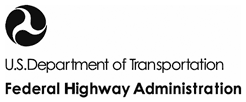Arterial Data Collection Technology
Contact Information: Operations Feedback at OperationsFeedback@dot.gov.
Printable version [PDF 3.1MB]
You may need the Adobe® Reader® to view the PDFs on this page.
Travel Time on Arterials and Rural Highways: State-of-the-Practice Synthesis on Arterial Data Collection Technology
April 2013

FHWA-HOP-13-028
Notice
This document is disseminated under the sponsorship of the U.S.
Department of Transportation in the interest of information exchange.
The U.S. Government assumes no liability for use of the information
contained in this document. This report does not constitute a standard,
specification, or regulation.
The United States Government does not endorse products or
manufacturers. Trademarks or manufacturers' names appear herein only
because they are considered essential to the objective of this document.
Quality Assurance Statement
The Federal Highway Administration (FHWA) provides high quality
information to serve Government, industry, and the public in a manner
that promotes public understanding. Standards and policies are used to
ensure and maximize the quality, objectivity, utility, and integrity of its
information. FHWA periodically reviews quality issues and adjusts its
programs and processes to ensure continuous quality improvement.
Table of Contents
[ Technical Report Documentation Page ] [ Acknowledgements ] [ List of Acronyms ]
Executive Summary
1. Introduction
1.1 Background and Objectives
1.2 Methodology
1.3 Organization of Synthesis Report
2. Data Source Summaries
2.1 Bluetooth Detection
2.2 Toll Tag Reader
2.3 In-Pavement Magnetic Detectors
2.4 Automatic License Plate Readers (ALPR)
2.5 Machine Vision
2.6 Connected Vehicle
2.7 Radar, Microwave, LIDAR (RML)
2.8 Inductive Loops
2.9 Crowdsourcing
2.10 Cell Phone Signal Monitoring
3. Implementations
of Arterial Travel Time Data Collection
3.1 Case Study: Chandler, AZ
3.1.1 Background and Planning
3.1.2 Implementation and Management
3.1.3 Lessons Learned
3.2 Case Study: St. Louis, MO
3.2.1 Background
and Planning
3.2.2 Implementation and Management
3.2.3 Lessons Learned
3.3 I-95 Corridor Coalition
3.4 Utah County, UT, I-15
3.5 Houston, TX, Multiple Routes
3.6 Flagstaff, AZ, US-180
3.7 Atlanta Area, GA
3.8 Essex County, United Kingdom
4. Best Practices
for Arterial Travel Time Data Collection
4.1 Needs Assessment, Planning, and Specifications Development
4.2 Selecting and Acquiring Data Collection Technology
4.3 Implementation, Management, and Evaluation
5. Conclusion
References
List of Figures
Figure 1. ATT Signs in
Chandler, Arizona
Figure 2. TrafficCast's
BlueTOAD Pole-mounted, Solar-powered Bluetooth Detector
and Cabinet Interior
Figure 3. Toll Tag Reader
(AVI) in Houston, TX
Figure 4. Sensys Sensor
Figure 5. Typical Sensys
Implementation Showing Sensor Array, Repeater, and
Access Point
Figure 6. ALPR Illumination
(Foreground) and Camera (Background) Used in a Work
zone On Arizona State Route 68
Figure 7. Bluetooth Detector
on Light Pole that Taps into a Pedestrian Signal Head
Using Power over Ethernet
Figure 8. ATT Signs in
Chandler, AZ
Figure 9. Locations of
DMS and Advised Routes
Figure 10. Arterial-based
Display on Approach to I-55
Figure 11. Arterial-based
Display on Route 94
Figure 12. Freeway and
Arterial Coverage (as Built) in Philadelphia, PA
Figure 13. Both Phases
of a Trailblazer Sign
Figure 14. Houston TranStar
Arterial Traffic Map (detail)
Figure 15. ATT Detection
Coverage (Shown as Color-coded Arterials) in Cobb
County, Georgia: US-41/Cobb Pkwy, Chastain Road, Bells
Ferry Road, and Barrett Pkwy
Figure 16. ATT Coverage
(Shown as Green-colored Arterials) in Essex County,
UK
List of Tables
Table 1. Candidate ATT
Technologies
Table 2. Table of Search
Terms and Categories
Table 3. Candidate ATT
Technologies
Table 4. Vehicle Probe Project Current Contracted Coverage
U.S. Department of Transportation
Federal Highway Administration
Office of Operations
1200 New Jersey Avenue, SE
Washington, DC 20590
Toll-Free "Help Line" 866-367-7487
www.ops.fhwa.dot.gov
April 2013
FHWA-HOP-13-028